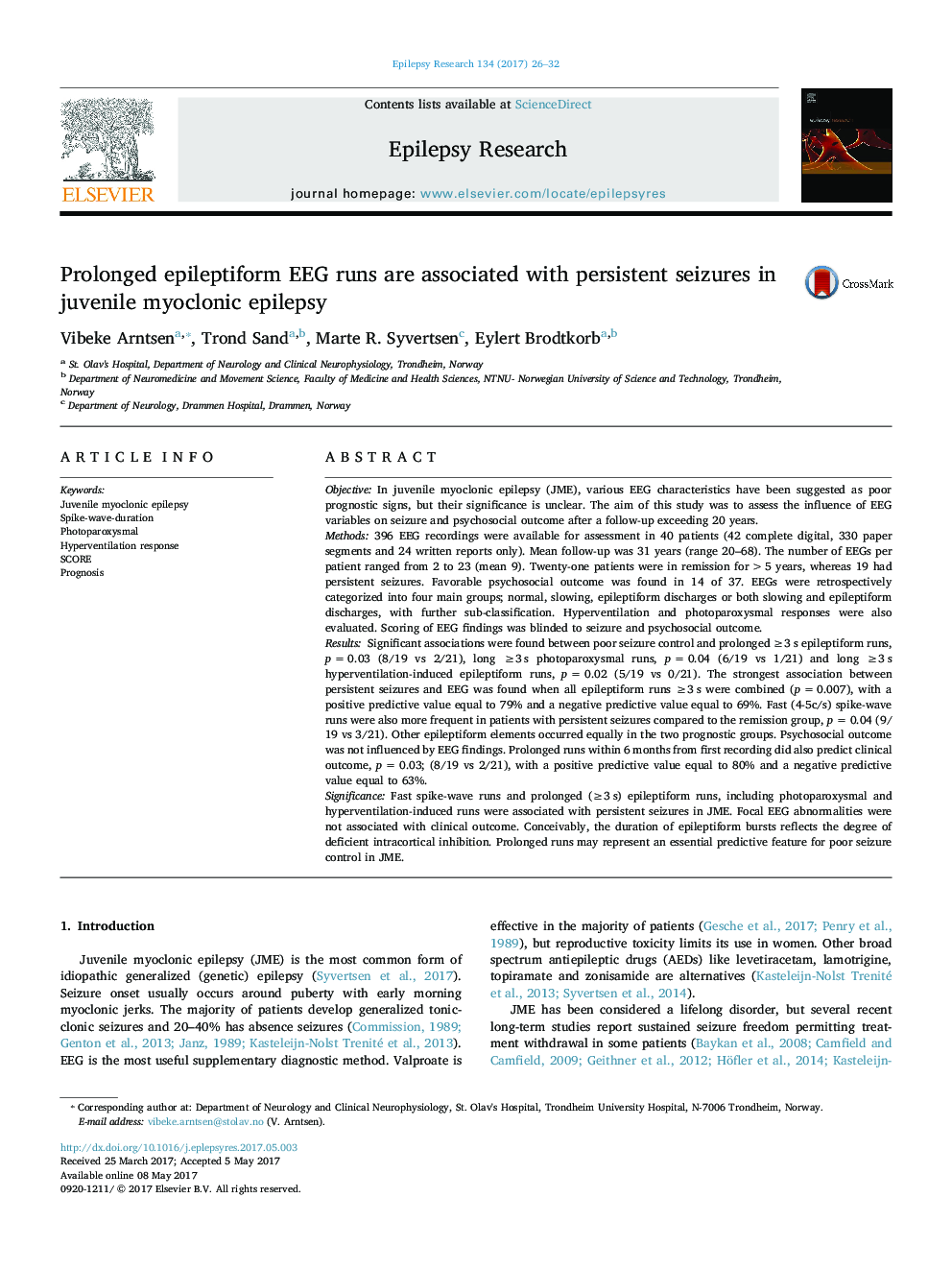| کد مقاله | کد نشریه | سال انتشار | مقاله انگلیسی | نسخه تمام متن |
|---|---|---|---|---|
| 5628562 | 1579889 | 2017 | 7 صفحه PDF | دانلود رایگان |

- â¥3 s epileptiform runs were associated with poor seizure prognosis.
- Positive and negative predictive values were equal to 79% and 69%, respectively.
- Fast spike-waves runs were also more frequent in patients with persistent seizures.
- Focal EEG abnormalities/asymmetries were not associated with clinical outcome.
ObjectiveIn juvenile myoclonic epilepsy (JME), various EEG characteristics have been suggested as poor prognostic signs, but their significance is unclear. The aim of this study was to assess the influence of EEG variables on seizure and psychosocial outcome after a follow-up exceeding 20 years.Methods396 EEG recordings were available for assessment in 40 patients (42 complete digital, 330 paper segments and 24 written reports only). Mean follow-up was 31 years (range 20-68). The number of EEGs per patient ranged from 2 to 23 (mean 9). Twenty-one patients were in remission for >5 years, whereas 19 had persistent seizures. Favorable psychosocial outcome was found in 14 of 37. EEGs were retrospectively categorized into four main groups; normal, slowing, epileptiform discharges or both slowing and epileptiform discharges, with further sub-classification. Hyperventilation and photoparoxysmal responses were also evaluated. Scoring of EEG findings was blinded to seizure and psychosocial outcome.ResultsSignificant associations were found between poor seizure control and prolonged â¥3 s epileptiform runs, p = 0.03 (8/19 vs 2/21), long â¥3 s photoparoxysmal runs, p = 0.04 (6/19 vs 1/21) and long â¥3 s hyperventilation-induced epileptiform runs, p = 0.02 (5/19 vs 0/21). The strongest association between persistent seizures and EEG was found when all epileptiform runs â¥3 s were combined (p = 0.007), with a positive predictive value equal to 79% and a negative predictive value equal to 69%. Fast (4-5c/s) spike-wave runs were also more frequent in patients with persistent seizures compared to the remission group, p = 0.04 (9/19 vs 3/21). Other epileptiform elements occurred equally in the two prognostic groups. Psychosocial outcome was not influenced by EEG findings. Prolonged runs within 6 months from first recording did also predict clinical outcome, p = 0.03; (8/19 vs 2/21), with a positive predictive value equal to 80% and a negative predictive value equal to 63%.SignificanceFast spike-wave runs and prolonged (â¥3 s) epileptiform runs, including photoparoxysmal and hyperventilation-induced runs were associated with persistent seizures in JME. Focal EEG abnormalities were not associated with clinical outcome. Conceivably, the duration of epileptiform bursts reflects the degree of deficient intracortical inhibition. Prolonged runs may represent an essential predictive feature for poor seizure control in JME.
Journal: Epilepsy Research - Volume 134, August 2017, Pages 26-32